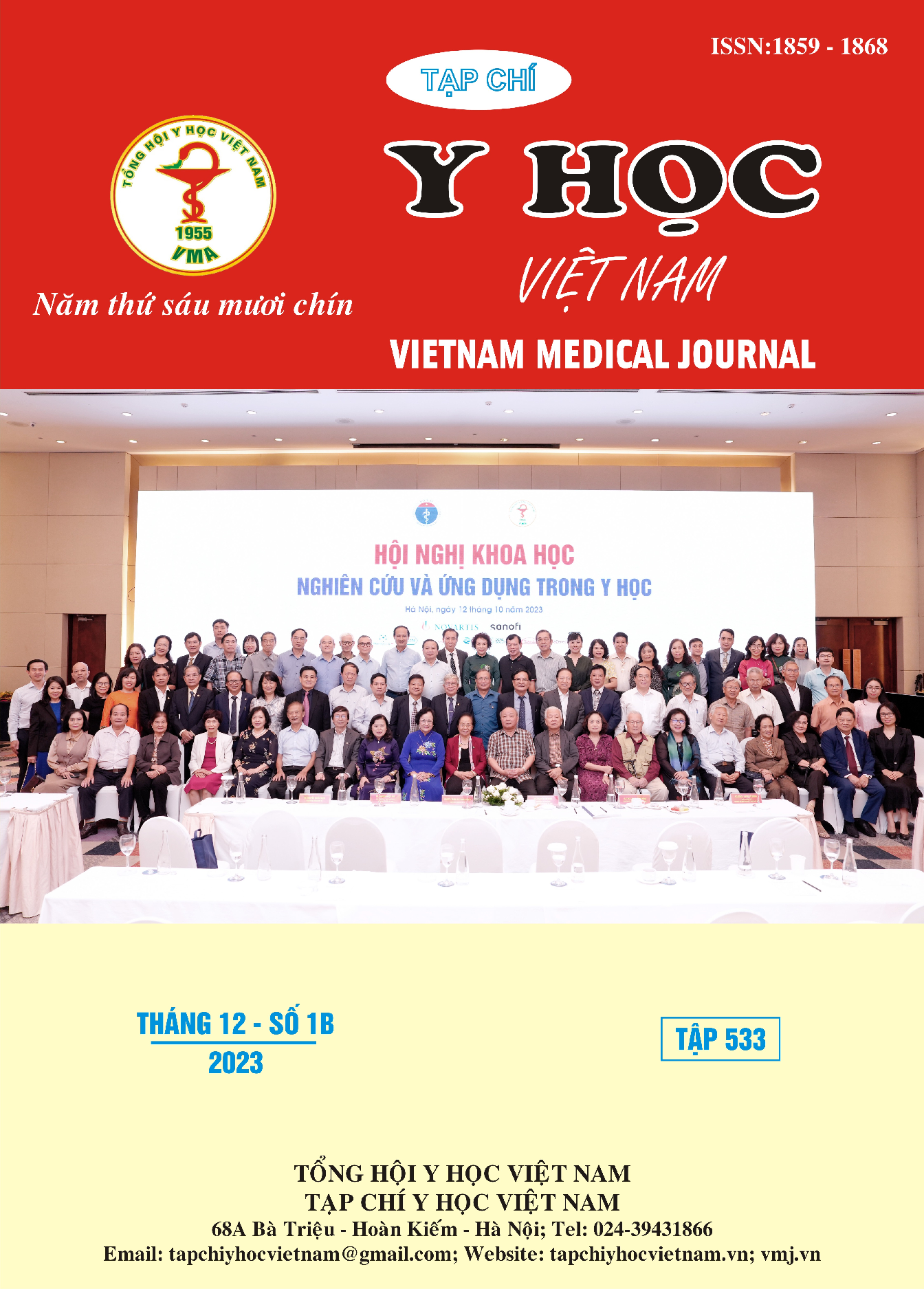EFFICACY OF MICROPULSE TRANSSCLERAL CYCLOPHOTOCOAGULATION PLUS IN REFRACTORY GLAUCOMA
Main Article Content
Abstract
Background: Refractory glaucoma is a complication that can occur in all types of glaucoma. Refractory glaucoma is a challenge for ophthalmologists. The disease can progress, leading to permanent blindness or pain that affects the patient's life. At that time, ciliary body destruction can be proposed and the method of implementation is additional transscleral ciliary micropulse photocoagulation (MTSCPC_Plus-Micropulse transcleral cyclophotocoagulation Plus) using a diode laser (810 nm) combining 2 techniques sweeping and discrete spot for intraocular pressure lowering and does not increase complications when only performing techniques sweeping. Studys also reported that this combination techniques limits the decrease in success rate over time. In Vietnam, there have been no studies evaluating the effectiveness and safety of this method. Therefore, we conducted a survey of evaluating the efficacy of micropulse transscleral cyclophotocoagulation plus in treating refactory glaucoma. Objective: Evaluating the efficacy of MTSCPC-plus in treating refactory glaucoma. Patient and methods: Prospective study involved with uncontrolled clinical trial. The main outcome measurement was IOP at 1day, 1 week, 1 month, 3 months, 6 months postprocedure, with success defined as a 20% reduction in baseline IOP or IOP from 6 to 21 mmHg, and no need for further reoperation. We collected and analyzed visual acuity, number of glaucoma medication and complication. Results: The study included 39 eyes with refractory glaucoma, average age was 55.15 ± 12.87 years, male accounted for 53.8% were included in the study. The diagnosis of secondary glaucoma accounted for the highest rate in the study group(76,9%), of which neovascular glaucoma accounted for the majority (53,3%). Visual acuity from no perception of light to count fingers 0,5 m. All diseases have CDR = 1.0. The average preoperatively IOP was 43,11 ± 9,63mmHg and posttreatment IOP at 1day, 1 week, 1 month, 3 months, 6 months were 27,9 ± 12,1 mmHg (35,86%), 21,67 ± 9,28 mmHg (49,63%), 20,27 ± 10,73 mmHg (53,55%), 21,2 ± 11,65 mmHg (51,89%), 18,23 ± 13,49 mmHg (59,66%), respectively. There was a reduction in glaucoma medications form 3,56 ± 0,55 preoperatively to 1,54 ± 1,05 at 6 months. There were no cases of chorioidal detachment or hypotony. Conclusions: Micropulse transscleral cyclophoto-coagulation plus is effective and safe in lowering intraocular pressure in eyes with refractory glaucoma.
Article Details
References
2. Kuchar, S., et al. (2016), "Treatment outcomes of micropulse transscleral cyclophotocoagulation in advanced glaucoma", Lasers Med Sci. 31(2), pp. 393-6.
3. Preda, M. A., et al. (2020), "Clinical outcomes of micropulse transscleral cyclophotocoagulation in refractory glaucoma-18 months follow-up", Lasers Med Sci. 35(7), pp. 1487-1491.
4. Tan, A. M., et al. (2010), "Micropulse transscleral diode laser cyclophotocoagulation in the treatment of refractory glaucoma", Clin Exp Ophthalmol. 38(3), pp. 266-72.
5. Wong, K. Y. T., et al. (2020), "MP3 Plus: A Modified Micropulse Transscleral Cyclophototherapy Technique for the Treatment of Refractory Glaucoma", J Glaucoma. 29(4), pp. 264-270.
6. Zaarour, K., et al. (2019), "Outcomes of Micropulse Transscleral Cyclophotocoagulation in Uncontrolled Glaucoma Patients", J Glaucoma. 28(3), pp. 270-275.


